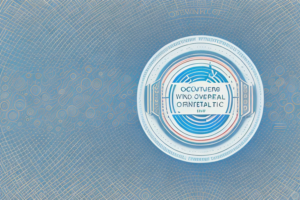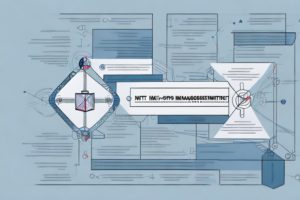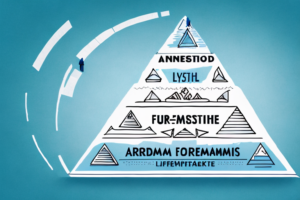What are the types of risk in risk management framework?

A risk management framework
Risk management is a vital aspect of running a successful business. It is a process that enables organizations to identify potential risks and take proactive measures to mitigate them. However, understanding the various types of risks in risk management is crucial to ensure the framework is effective and comprehensive.
Understanding the basics of risk management framework
Before we dive into the types of risks, let us first understand the basics of risk management framework. Risk management framework is the process of identifying, assessing, evaluating, and mitigating risks that could hinder the achievement of organizational objectives. It is a continuous process that involves several steps, each of which plays a critical role in ensuring effective risk management practices. These steps include identification, assessment, evaluation, mitigation, and monitoring. Risk management framework is applicable to organizations of all sizes and serves to protect them from unforeseeable circumstances.
One of the key benefits of implementing a risk management framework is that it helps organizations to be proactive in identifying and addressing potential risks before they become major issues. By having a structured approach to risk management, organizations can prioritize their resources and focus on the most critical risks that could have the greatest impact on their operations. Additionally, a risk management framework can help organizations to comply with regulatory requirements and industry standards, which can improve their reputation and credibility with stakeholders.
Identifying the various types of risks in risk management
There are various types of risks that organizations face in their day-to-day operations.
Operational risks
These are risks linked to an organization’s internal processes, systems, and people. They can arise due to inadequate procedures, failed systems, and human errors. Examples include fraud, data breaches, and system failures.
Financial risks
These types of risks are associated with financial transactions and market fluctuations. They result from market movements, credit defaults, and liquidity issues. Examples include credit risks, market risks, and liquidity risks
Reputational risks
These types of risks are linked to an organization’s image and reputation. They arise due to negative publicity, poor public relations, or unethical practices. Examples include scandals, negative media coverage, or product recalls.
Legal risks
Legal risks are those risks arising from lawsuits or non-compliance with legal and regulatory requirements. Examples include lawsuits, disputes, and penalties.
Strategic risks
These types of risks are linked to an organization’s long-term strategic plans. They arise due to changes in the business environment, customer needs, and market trends. Examples include new market entrants, shifts in consumer preferences, and disruptive technologies.
Environmental risks
Environmental risks are those risks that arise from an organization’s impact on the environment. They can result from pollution, waste disposal, and other environmental hazards. Examples include fines for non-compliance with environmental regulations, damage to the organization’s reputation, and legal action.
How to assess and evaluate risks in a risk management framework
The success of a risk management framework depends on how well an organization can assess and evaluate the risks it faces. The process of assessing and evaluating risks involves identifying and analyzing the potential impact of risks on an organization. This can be done through quantitative or qualitative analysis. Quantitative analysis typically involves the use of metrics and models to measure the likelihood and impact of risks. Qualitative analysis, on the other hand, involves evaluating risks based on subjective factors such as opinions and experiences.
Once risks have been identified and analyzed, it is important to prioritize them based on their potential impact and likelihood of occurrence. This allows organizations to focus their resources on managing the most critical risks first. Prioritization can be done through a risk matrix, which plots the likelihood and impact of risks on a scale to determine their priority level.
It is also important to regularly review and update the risk management framework to ensure it remains effective and relevant. This includes monitoring the effectiveness of risk mitigation strategies and adjusting them as needed. Additionally, changes in the organization’s environment or industry may require a reassessment of risks and the development of new strategies to manage them.
Mitigating risks in a risk management framework
The final step in risk management is the mitigation of risks. Mitigation involves the implementation of measures to reduce the impact or likelihood of identified risks. The choice of mitigation measures depends on the type of risk and the organization’s risk appetite. Some common mitigation measures include risk transfer, risk avoidance, risk reduction, and risk acceptance.
Risk transfer involves transferring the risk to another party, such as an insurance company. This is a common mitigation measure for risks that are too costly to bear alone. Risk avoidance involves eliminating the risk altogether by avoiding the activity that creates the risk. This is a common mitigation measure for risks that are too severe to manage.
Risk reduction involves implementing measures to reduce the likelihood or impact of the risk. This can include implementing safety procedures, redundancies, or backup systems. Risk acceptance involves accepting the risk and its potential consequences. This is a common mitigation measure for risks that are low in likelihood or impact, or for risks that are too costly to mitigate.
The importance of creating a risk management plan
Creating a risk management plan is critical to effective risk management. A risk management plan outlines an organization’s risk management policy, procedures, and processes. It identifies the roles and responsibilities of different stakeholders and outlines the steps to be taken in the event of a risk event. Creating a risk management plan ensures that an organization is well-prepared to deal with risks, reducing the impact and likelihood of the occurrence of those risks.
One of the key benefits of creating a risk management plan is that it helps organizations to identify potential risks before they occur. By conducting a thorough risk assessment, an organization can identify areas of vulnerability and take proactive measures to mitigate those risks. This can help to prevent costly and damaging incidents from occurring, such as data breaches, natural disasters, or financial losses.
Another important aspect of a risk management plan is that it provides a framework for ongoing risk management activities. By regularly reviewing and updating the plan, organizations can ensure that they are staying up-to-date with emerging risks and changing business environments. This can help to ensure that the organization remains resilient and adaptable in the face of new challenges and opportunities.
Key components of a successful risk management framework
For a risk management framework to be successful, it must have the following key components:
Clear objectives
A successful risk management framework should have clear objectives that align with an organization’s overall goals and objectives. These objectives should be communicated effectively to all stakeholders, ensuring that everyone understands what is expected of them.
Effective risk assessment
Effective risk assessment is crucial to the success of a risk management framework. This involves identifying, analyzing, and evaluating risks that could potentially impact the organization adversely.
Continuous monitoring and review
Continuous monitoring and review of the risk management framework are essential to ensure it stays relevant. This involves collecting data, analyzing trends, and making necessary adjustments to the framework to ensure its effectiveness.
Effective communication
Effective communication is crucial to ensure that all stakeholders are aware of the risks they face and the measures being taken to mitigate those risks.
Top strategies for managing risks in different industries
The strategies for managing risks vary depending on the industry. Some of the top strategies for managing risks in different industries include:
Healthcare industry
In the healthcare industry, the top strategies for managing risks include proper patient care, compliance with regulations and policies, and efficient administration of medication.
Finance industry
In the finance industry, the top strategies for managing risks include risk diversification, regulatory compliance, and continuous monitoring and review of market trends.
Manufacturing industry
In the manufacturing industry, the top strategies for managing risks include supply chain management, continuous monitoring and review of processes, and effective management of product quality.
Retail industry
In the retail industry, the top strategies for managing risks include effective inventory management, customer satisfaction, and management of supply chain operations.
Risk management tools and techniques for effective decision making
There are several risk management tools and techniques that organizations can use to make informed decisions. These tools include:
Decision trees
Decision trees are visualization tools that help organizations make decisions based on their possible outcomes.
SWOT analysis
SWOT analysis is a tool that helps organizations identify their strengths, weaknesses, opportunities, and threats to determine the best course of action.
Risk assessment software
Risk assessment software helps organizations assess and evaluate risks quickly and efficiently.
Common challenges faced while implementing a risk management framework
Implementing a risk management framework is not without its challenges. Some of the common challenges include:
Lack of buy-in from stakeholders
Implementing a risk management framework requires the active participation of all stakeholders. Lack of buy-in from these stakeholders can hinder the implementation of the framework.
Insufficient resources
Effective risk management requires sufficient resources such as funds and personnel. Limited resources can make it difficult to implement a comprehensive risk management framework.
Limited risk awareness
Some organizations may not be aware of the risks they face, which may lead to inadequate risk management practices.
The role of technology in enhancing risk management practices
Technology has played a significant role in enhancing risk management practices. The following are some of the ways technology is being used to mitigate risks:
Big data analytics
Big data analytics helps organizations analyze vast amounts of data to identify potential risks and develop effective mitigation strategies.
Cybersecurity tools
Cybersecurity tools help organizations protect their systems and data from cyber attacks.
Cloud-based risk management solutions
Cloud-based risk management solutions facilitate collaboration and enable organizations to manage risks from anywhere.
Best practices for integrating risk management into business strategy
Integrating risk management practices into business strategy is essential for ensuring effective risk management. Some of the best practices include:
Developing a culture of risk awareness
Organizations should develop a culture of risk awareness by educating employees on the importance of risk management and encouraging them to report potential risks.
Aligning risk management with business objectives
Risk management should be aligned with an organization’s business objectives to ensure that its resources are directed towards mitigating risks that have the most significant impact.
Continuous monitoring and review
Continuous monitoring and review of the risk management framework are essential to ensure that it stays relevant and effective.
Regulatory requirements for an effective risk management system
Regulatory bodies have set guidelines and regulations that organizations must adhere to in setting up an effective risk management system. Some of these regulatory requirements include:
Compliance with local and international regulations
Organizations must comply with local and international regulations, such as data protection laws, to ensure that their risk management practices are legal and ethical.
Documenting risk management processes and procedures
Organizations must document their risk management processes and procedures to ensure transparency and accountability.
Regular audits and reviews
Regulatory bodies may require organizations to conduct regular audits and reviews of their risk management practices to ensure compliance with regulations and guidelines.
The impact of global events on risk management frameworks
The world is constantly changing, and global events can have a significant impact on risk management frameworks. Organizations must be prepared to adapt their risk management strategies to account for these events. Some of the events that can impact risk management frameworks include natural disasters, political instability, and pandemics like COVID-19.
Future trends and advancements in risk management practices
The future of risk management practices is promising. Advancements in technology and innovative practices are expected to significantly enhance risk management practices. Some of the future trends that organizations should be aware of include:
Artificial Intelligence
Artificial Intelligence is expected to revolutionize risk management practices by providing more accurate and efficient risk assessments.
Continuous monitoring
Continuous monitoring is expected to become more prevalent in risk management practices, enabling organizations to take proactive measures to mitigate potential risks.
Risk management automation
Automation is expected to streamline risk management practices and improve efficiency by reducing manual interventions.
Effective risk management is vital for the success of any organization. Understanding the various types of risks is crucial to implementing a comprehensive risk management framework. Organizations must adopt best practices and keep up to date with the latest trends and advancements to ensure that their risk management practices are effective in mitigating possible risks.



